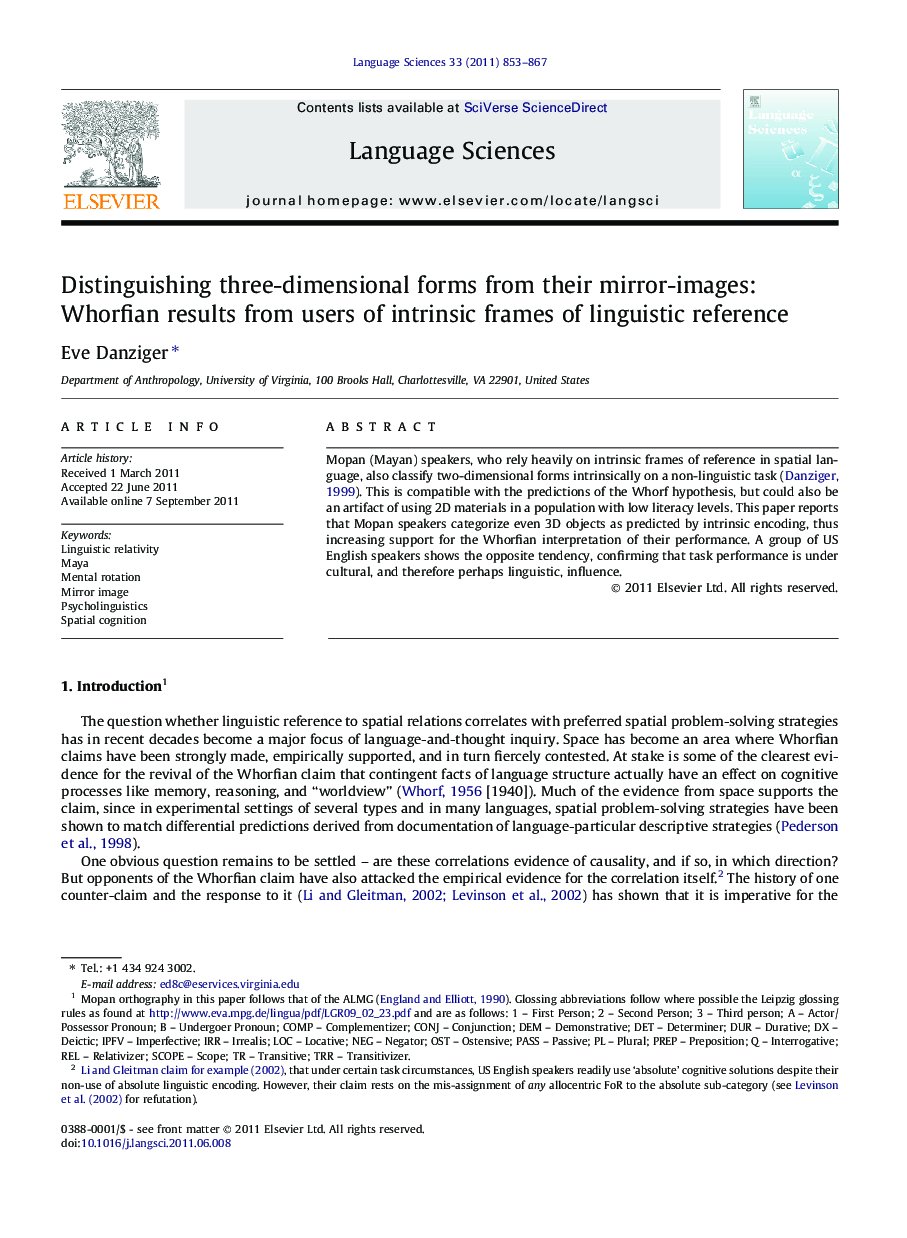| Article ID | Journal | Published Year | Pages | File Type |
|---|---|---|---|---|
| 1103380 | Language Sciences | 2011 | 15 Pages |
Mopan (Mayan) speakers, who rely heavily on intrinsic frames of reference in spatial language, also classify two-dimensional forms intrinsically on a non-linguistic task (Danziger, 1999). This is compatible with the predictions of the Whorf hypothesis, but could also be an artifact of using 2D materials in a population with low literacy levels. This paper reports that Mopan speakers categorize even 3D objects as predicted by intrinsic encoding, thus increasing support for the Whorfian interpretation of their performance. A group of US English speakers shows the opposite tendency, confirming that task performance is under cultural, and therefore perhaps linguistic, influence.
► Mopan speakers judge 3D figures ‘not different’ from their mirror-image reflections. ► Distinguishing a 3D figure from its mirror-image is culturally learned. ► Unlike AIAR, this task makes clear Whorfian predictions for intrinsic-dominant speakers. ► Mopan performance conforms to linguistic relativity predictions on this single solution task. ► These results rule out effects of literacy or of doubt about experimenter intentions.
